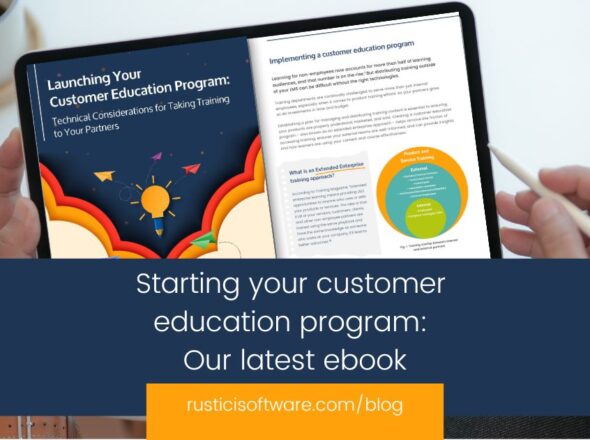I can’t think of a single LMS that handles language support elegantly. Yes, many of them have a setting whereby a person who speaks another language can reconfigure the interface to reflect their preferred language. But very few LMSs allow a learner to switch the courses offered to them from a default language to their own. Some allow an administrator to make efforts to manage this, but it is incredibly difficult as reports don’t understand that “Basic HR Training (French)” earns the same credit as “Basic HR Training (English)”.

LMSs often assume that the content itself can handle this, and some pieces of content do. They embed multiple voiceover tracks, or language resources, and allow the learner to make a choice from within each course, switching to their preferred language. But this is hard to do in a single piece of content, and the reality is that almost no content vendors bother.
Truthfully, this is the kind of thing that content providers are better suited to than LMSs and their administrators. Content providers are invested in learners’ ability to grasp the material. Content providers have reason to make their content better than their competitors, whereas LMSs have less incentive to do so.
These are my beliefs:
- LMSs should not have to understand that different courses in different languages fulfill the same requirement.
- Learners should be allowed to take their training in the language with which they are most comfortable.
- Content providers care more about content and its applicability than LMS vendors.
- Content providers need to be able to use their preferred authoring environments and tools.
We built Content Controller to accommodate these beliefs. When a learner launches a course from their own LMS, Content Controller offers the learner the choice amongst the supported languages for that course. Their LMS knows nothing about the fact that there are multiple supported languages, just that it needs to launch the course.This means that the content provider can create the course using whatever tools they wish. Then, they create an equivalent in Content Controller that relates all the language variations of a course with the respective languages. The learner makes a choice during their initial launch, which can be persisted in the application, and that choice determines which variation of the course is delivered to them. The magic here is the LMS never knows any of this is happening, just that the learner has fulfilled the requirement. Meanwhile, the content provider can guarantee for their customers that their learners are taking courses in the language they understand best.
This capability in Content Controller has shifted the responsibility for learner-course/language association from the LMS, which never does it well, to the content provider, who has the ability to offer multiple languages of the same course and manage it effectively. Better for the learner, better for the LMS administrator, and better for the content provider.


